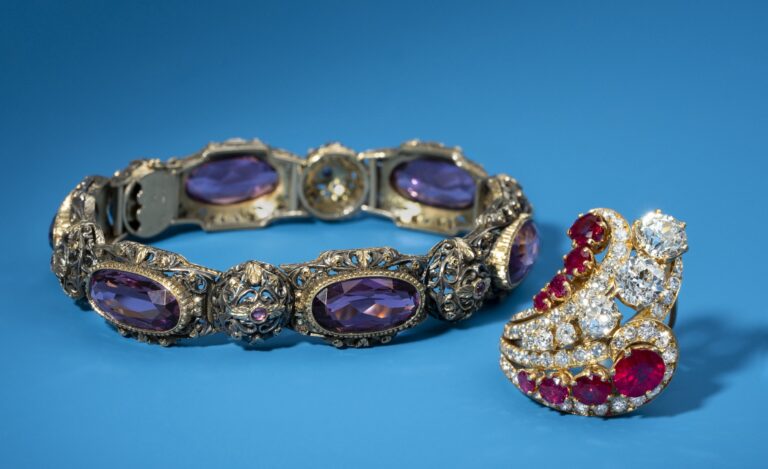Comprehensive Guide to Silver Subsidiary Materials: Uses and Benefits
Silver, known for its brilliant luster and conductive properties, has been a cornerstone in various industries for centuries. Beyond its pure form, silver is often combined with other materials to enhance its properties, creating what are known as silver subsidiary materials. These materials play a crucial role in a multitude of applications, from jewelry making to advanced technological devices. This comprehensive guide delves into the uses and benefits of silver subsidiary materials, shedding light on their significance in modern industries.
What are Silver Subsidiary Materials?
Silver subsidiary materials are composites or alloys that include silver combined with other elements or compounds. These materials are engineered to improve specific properties such as strength, conductivity, corrosion resistance, and flexibility. Commonly used subsidiary materials include silver alloys, silver-coated composites, and silver nanoparticles.
Types of Silver Subsidiary Materials
Silver Alloys
Silver alloys are mixtures of silver with other metals such as copper, nickel, or zinc. These alloys enhance the physical and chemical properties of silver, making it more suitable for various applications.
- Sterling Silver: Comprising 92.5% silver and 7.5% other metals, usually copper, sterling silver is widely used in jewelry and silverware due to its enhanced durability and reduced tarnish.
- Coin Silver: Historically used in minting coins, coin silver typically contains around 90% silver and 10% copper, offering increased hardness.
- Electrum: A natural alloy of gold and silver, often with trace amounts of copper and other metals, used in ancient coinage and decorative items.
Silver-Coated Composites
Silver-coated composites involve a base material, such as glass, ceramics, or polymers, coated with a thin layer of silver. This combination leverages the properties of both materials, creating products with unique characteristics.
- Silver-Plated Jewelry: Base metals like copper or brass are coated with a layer of silver, providing the appearance and benefits of silver at a lower cost.
- Conductive Coatings: Silver-coated glass or polymer particles are used in conductive adhesives and coatings, enhancing electrical conductivity in electronic components.
Silver Nanoparticles
Silver nanoparticles are tiny particles of silver, typically less than 100 nanometers in size. Due to their high surface area to volume ratio, they exhibit unique physical and chemical properties, making them valuable in various advanced applications.
- Medical Applications: Silver nanoparticles are used in wound dressings, antibacterial coatings, and medical devices due to their antimicrobial properties.
- Electronics: In the electronics industry, silver nanoparticles are utilized in conductive inks and pastes for printed electronics and sensors.
Uses of Silver Subsidiary Materials
Jewelry and Silverware
Silver subsidiary materials, particularly alloys like sterling silver, are extensively used in the creation of jewelry and silverware. 실버부자재 These materials offer the aesthetic appeal of pure silver while providing enhanced durability and resistance to tarnish, making them ideal for everyday use.
Electronics and Electrical Applications
The exceptional electrical conductivity of silver makes it a preferred material in the electronics industry. Silver subsidiary materials are used in various components, including:
- Conductive Inks and Pastes: Silver nanoparticles are used in conductive inks for printed electronics, photovoltaic cells, and flexible displays.
- Connectors and Contacts: Silver-coated connectors and contacts ensure reliable electrical connections in devices ranging from household appliances to advanced computing systems.
Medical and Healthcare
Silver’s antimicrobial properties are harnessed in medical applications to prevent infections and promote healing. Silver subsidiary materials are used in:
- Wound Dressings: Silver nanoparticles and silver-coated fabrics are used in wound dressings to reduce the risk of infection and enhance the healing process.
- Medical Devices: Silver coatings on medical devices, such as catheters and implants, help prevent bacterial growth and reduce the risk of infections.
Industrial Applications
In industrial settings, silver subsidiary materials are used for their thermal and electrical conductivity, corrosion resistance, and catalytic properties.
- Catalysts: Silver is used as a catalyst in chemical reactions, particularly in the production of ethylene oxide, a key ingredient in the manufacturing of plastics and antifreeze.
- Mirrors and Reflective Coatings: Silver-coated glass is used in high-quality mirrors and reflective coatings for solar panels and telescopes due to its superior reflectivity.
Benefits of Silver Subsidiary Materials
Enhanced Durability
By combining silver with other materials, the resulting subsidiary materials often exhibit improved durability and strength. This is particularly beneficial in applications such as jewelry and silverware, where increased wear resistance is essential.
Cost-Effectiveness
Silver subsidiary materials can provide the desired properties of pure silver at a lower cost. For example, silver-plated jewelry offers the appearance of silver without the high price tag, making it accessible to a broader range of consumers.
Improved Performance
In technological and industrial applications, the enhanced properties of silver subsidiary materials can lead to better performance. For instance, conductive inks containing silver nanoparticles enable the production of flexible and efficient electronic components.
Versatility
The wide range of silver subsidiary materials allows for their use in diverse applications, from everyday items like jewelry to advanced technological devices. This versatility makes silver an invaluable resource across multiple industries.
Conclusion
Silver subsidiary materials represent a significant advancement in the utilization of silver. By enhancing its natural properties through alloying, coating, or nanotechnology, these materials offer a plethora of benefits, including increased durability, cost-effectiveness, improved performance, and versatility. Whether in the form of sterling silver jewelry, conductive inks, or antimicrobial medical devices, silver subsidiary materials continue to play a vital role in various sectors, driving innovation and improving quality of life.
Keep an eye for more news & updates on NextWeblog.Com!






